- News
- Reviews
- Bikes
- Components
- Bar tape & grips
- Bottom brackets
- Brake & gear cables
- Brake & STI levers
- Brake pads & spares
- Brakes
- Cassettes & freewheels
- Chains
- Chainsets & chainrings
- Derailleurs - front
- Derailleurs - rear
- Forks
- Gear levers & shifters
- Groupsets
- Handlebars & extensions
- Headsets
- Hubs
- Inner tubes
- Pedals
- Quick releases & skewers
- Saddles
- Seatposts
- Stems
- Wheels
- Tyres
- Tubeless valves
- Accessories
- Accessories - misc
- Computer mounts
- Bags
- Bar ends
- Bike bags & cases
- Bottle cages
- Bottles
- Cameras
- Car racks
- Child seats
- Computers
- Glasses
- GPS units
- Helmets
- Lights - front
- Lights - rear
- Lights - sets
- Locks
- Mirrors
- Mudguards
- Racks
- Pumps & CO2 inflators
- Puncture kits
- Reflectives
- Smart watches
- Stands and racks
- Trailers
- Clothing
- Health, fitness and nutrition
- Tools and workshop
- Miscellaneous
- Buyers Guides
- Features
- Forum
- Recommends
- Podcast
review
£1,299.00
VERDICT:
Great long-distance comfort and load-carrying capacity, very good quality gears and brakes, and comprehensive kit
Long-distance comfort
Quality components
Comprehensively kitted out for touring or heavy day-to-day use
Slightly weighty
I'd like to have seen thru-axles
Weight:
12,910g
Contact:
At road.cc every product is thoroughly tested for as long as it takes to get a proper insight into how well it works. Our reviewers are experienced cyclists that we trust to be objective. While we strive to ensure that opinions expressed are backed up by facts, reviews are by their nature an informed opinion, not a definitive verdict. We don't intentionally try to break anything (except locks) but we do try to look for weak points in any design. The overall score is not just an average of the other scores: it reflects both a product's function and value – with value determined by how a product compares with items of similar spec, quality, and price.
What the road.cc scores meanGood scores are more common than bad, because fortunately good products are more common than bad.
- Exceptional
- Excellent
- Very Good
- Good
- Quite good
- Average
- Not so good
- Poor
- Bad
- Appalling
The Giant ToughRoad SLR 1 lives up to its name very well – but it brings much more to the party than old-boot toughness. The aluminium ToughRoad SLR 1 is an absolutely great ride on very poor road surfaces, scoffing at potholes, laughing in the face of broken asphalt and smoothing out gravel tracks so it's like you're riding on a snooker table. Okay, that's something of an exaggeration, but having 50mm of rubber between you and the road does take a lot of the sting out of things when the going gets rough.
The ToughRoad comes equipped with front and rear racks. It also has a massive rider, bike and kit weight limit – certainly beyond the scope of what I could ever hope to haul up mountains or across windswept plains without bits of me falling apart.
> Find your nearest dealer here
The components are well chosen, with the Shimano Deore drivetrain offering a wide range of gears, including a 32x44 bailout gear, and top-quality braking from Shimano's hydraulic discs. Tough Giant own-brand tubeless-ready wheels and tyres and a carbon D-profile seatpost round out a quality package, and the ToughRoad's neatly finished aluminium matt-painted frame is compatible with both full-length mudguards and a kickstand, both of which are handy for touring and commuting.
Ride
The first thing you notice when you're riding the ToughRoad is that it's comfortable – one of the main advantages of having 50mm tyres. The slightly relaxed head tube angle and a wheelbase around 107cm in length gives the ToughRoad a great deal of stability, and the high stack figure – 602mm – gives you an upright riding position that is both comfortable and lets you see and be seen.
On the open road this means you can take in and enjoy your environment, while riding in the city it helps drivers see you. And you can do both – this ToughRoad really does take any surface in its surefooted stride. It copes with smooth roads – if you're luckily enough to find and – severely broken country lanes that are all too easy to find, track and trail with equal aplomb.
With a weight approaching 13kg the ToughRoad is never going to fly along on the flat or speed you uphill at any great speed, but get yourself into cruise mode and this Giant is ideal for tapping out mile after mile in comfort, which is what you need when you're touring.
When you do hit steeper or long climbs you can drop down into the 32x44 crawler gear, which with the 50mm tyre is just 21.6in. Yes, this is low, but for extended or heavily laden touring you might even want to go lower still, something under 20 inches.
The ToughRoad is also a very confident descender. There's good grip from the tyres, bags of stability from the stretched-out geometry, and superb braking. A veritable win, win, win when you hit the descents.
Frame and fork
Giant pioneered compact frames with its Mike Burrows-designed TCR in the 1990s, and the ToughRoad – though a strikingly different bike with very different riding ambitions – has an extemely compact frame.
The ToughRoad's top tube meets the seat tube at the same level as the seatstays, segueing neatly into them. A lot of the carbon seatpost is exposed too, which certainly adds to the comfort.
The frame is made from Giant's ALUXX SLR-grade aluminium and it has genuine touring credentials too, as it's compatible with a kickstand and full-length mudguards. Kickstands are a rare sight on British bikes, but having just tested a bike with a stand, I'd seriously consider fitting one for touring, even more so on a flat-barred bike which is harder to lean against a wall than a bike with a drop bar.
The fork is made from Giant's Advanced-Grade carbon fibre, and its chunky oversized alloy OverDrive steerer contributes to the ToughRoad's stable and rock-solid handling.
The compact frame is also incredibly strong. If you're something of a Clydesdale or fancy some seriously heavily laden touring, the ToughRoad SLR 1's bike and rider weight limit is a massive 161kg, which is over 25 stones.
The cabling isn't routed internally, which will please home and bike shop mechanics alike, but the gear cables and rear hydraulic brake hose are routed very tidily on the underside of the down tube, where they're housed behind a screw-in plastic plate, Giant's X-Defender, which doubles up as a very moderate mudguard.
Groupset
Giant has chosen the ToughRoad's kit well, placing durability and comfort over low weight, which is the right call every time for a touring-cum-adventure bike.
Shimano Deore 10-speed shifting is light and accurate, and the range of gears ideal for all but the most vertiginous of adventures. The front mech works well with the 44/32 FSA chainset, with the KMC chain the only other deviation from an otherwise all-Shimano drivetrain.
But the real highlight – especially if you're old enough to remember Weinmann centre-pull 'brakes' (using the term loosely) – is the hydraulic braking. On long 30mph downhills they're consistently powerful and controlled but with so little effort; you could brake safely using a single finger on each hand – and pinkies at that. I know, I did so, and even my less-than-Superman-like little fingers were sufficient for safe and controlled stopping. Though please don't try this at home.
They're silent too, even in the rain. I was a bit surprised the ToughRoad doesn't have thru-axles but even with quick releases the braking is impeccable. The frame design is a few years old now, so I'd expect the next version to come with thru-axles, which would have the added advantage of making removing the front wheel easier. Because of the positioning of the front rack's lower struts, you have to fully remove the axle to release the wheel, increasing the chances of losing one of the springs.
Wheels and tyres
As with the frame, it's a case of toughness, durability and comfort when it comes to the Giant's wheels and tyres. The GX Discs might only have moderate spoke counts but they coped with any abuse I could throw at them, and with the bike's massive weight limit, this suggest they should be able to cope with most things. They're also tubeless ready, as are the massive 50mm Giant Sycamore tyres.
The Sycamores have quite shallow diamond-shaped knobs that are fine on the road – though far from fast – and very good for bombing along tracks, towpaths and gravel tracks, thanks to the grip they offer. They also feature Giant's FlatGuard Deflect 2 for puncture protection.
Finishing kit
I found little to criticise about the ToughRoad's finishing kit. It comes with with front and rear racks, with the rear rack alone having a maximum capacity of 25kg/55lb, which, frankly, is more than I would ever consider carrying. I tried multiple sets of panniers on the rear rack and they all worked without any compatibility issues.
The contact points are good, too. I found the flattened rubber handgrips comfortable, although I'd swap them for Ergon's GP3 or its longer-still GP5 grips or Lifeline's less expensive Ergonomic Handlebar Grips for the extra handhold. These would offer an alternative riding position that I feel is more natural and comfortable over a longer ride.
The wide bar means you're never going to go aero, but it does make more challenging climbs that bit easier.
I had no issues with the ToughRoad's other contact point. I got on well with the saddle, which sits on Giant's own carbon D-Fuse seatpost.
Its D-shaped profile is designed to offer some fore-and-aft flex without allowing unwanted and energy-wasting sideways flex – it's comfortable, but do we need yet another seatpost standard? Apparently, yes. And it does mean your saddle remains correctly aligned if you have to change the height...
Value
We haven't tested many bikes that are similar to Giant's ToughRoad. Ridgeback's 2021 Expedition is a little cheaper at £1,099 and has a steel frame and smaller 26in mountain bike wheels, but I'd argue that the ToughRoad – with its quality Deore gearing and Shimano hydraulic discs – has an equipment level that justifies the extra cost easily.
At £1,249.99 Genesis's chromoly steel Croix de Fer 10 Flat Bar has a very similar price to the Giant, but while it comes with Shimano's hydraulic disc brakes, its 34x34 bottom gear isn't as low as the Giant's, whose 10-speed Deore is also a notch above the Croix de Fer's 9-speed Sora. The Genesis also only has a rear rack as standard. Once again, when it comes to value I'd say the Giant edges it.
> Buyer’s Guide: 14 of the best touring bikes
Even up against tourers from the likes of Spa Cycles and Thorn, the ToughRoad SLR 1 scores well for value – though Giant can't offer the degree of customisation that these specialist touring retailers can offer. Thorn's flat-bar Nomad starts at £1,565 and its Club Tour is available from £1,675, though both have the advantage of coming in numerous sizes and multiple different build options. (Dave tested the Club Tour Mk5 last year.)
Spa Cycles' steel Tourer Flat Bar starts at a very appealing £895 (down from its £990 MSSP), but its kit is based around 8-speed Shimano Altus and V-brakes.
Conclusion
I became very attached to the Giant. For its comfort, its ability to carry far too many bottles of white wine in panniers, and its willingness and capability over poor surfaces. I'd go for bar ends, and for an expedition-level tour you might like an even lower bottom gear, but there's pretty much nothing I'd change on the Giant, though I wouldn't be surprised to see future models get thru-axles.
If I was using it as an everyday bike for commuting and leisure riding on well-surfaced roads I'd probably lose the front rack and swap the chunky 50mm tyres for slicker, slightly narrower tyres, and possibly make the most of the tubeless-ready rims by dispensing with the tubes. Going tubeless would make the ToughRoad a little bit quicker without compromising either its handling or its comfort.
> Explore and more – why your next bike should be a touring bike
But if you're planning on saddling up and riding off into the sunset for a week or two, I'd definitely recommend the Giant. It's tough, tackles multiple surfaces with aplomb, has ample load-carrying capabilities and it's comfortable.
Aluminium and carbon fibre rather than steel? Hydraulic brakes rather than mechanical stoppers? The latter may be an issue in the back of beyond, but in much of the world you're never that far from a bike shop – and you can carry spares. And while aluminium and carbon aren't going to be welded by a local garage grease monkey, I'm not sure that's much of an issue. They can both take lots of abuse, and the sort of incident that writes off an aluminium frame or carbon fork is pretty likely to leave a steel bike in an equally unrepairable condition.
And if you're touring and the road runs out – as has happened to me in Australia and New Zealand – this will cope with grit and gravel without murmur. If your commute takes in 10 miles of towpath – muddy in winter, dusty in summer – the ToughRoad will also excel here. I did take this through woods and over unsurfaced tracks and it was a completely stress-free experience, and it didn't even notice poor road surfaces.
Verdict
Great long-distance comfort and load-carrying capacity, very good quality gears and brakes, and comprehensive kit
road.cc test report
Make and model: Giant ToughRoad SLR 1 2021
Size tested: Med, 59
About the bike
List the components used to build up the bike.
Frame ALUXX-Grade Aluminium, disc. Compatible with fenders and kickstand
Fork Advanced-Grade Composite, OverDrive steerer, disc
Handlebar Giant Contact XC, 31.8mm
Stem Giant Contact 8-degree
Seatpost Giant D-Fuse, composite
Saddle Giant Sport
Shifters Shimano Deore
Front Derailleur Shimano Deore
Rear Derailleur Shimano Deore
Brakes Shimano BL-MT201 hydraulic disc
Brake Levers Shimano Deore
Cassette Shimano CS-M4100, 11x42
Chain KMC X10 with Missing Link
Crankset FSA Tempo, 34/50
Bottom Bracket FSA V-Drive, 32/44 with chainguard
Rims Giant GX Disc wheelset
Hubs Giant GX Disc wheelset
Spokes Giant GX Disc wheelset
Tyres Giant Sycamore S, 700x50c, FlatGuard Deflect 2 (max tyre width possible: 50mm)
Tell us what the bike is for and who it's aimed at. What do the manufacturers say about it? How does that compare to your own feelings about the bike?
"When the pavement ends, the adventures begin," is how Giant starts the spiel about its ToughRoad SLR 1. "When you want to keep rolling beyond city limits, this is the bike. Climb a rugged mountain pass, roll through gravel, or venture onto forest trails. ToughRoad SLR lets you do it all on one ride.
"Quick, efficient and ultra-versatile, ToughRoad SLR is a bike made to stoke your adventurous side. A lightweight ALUXX SLR aluminium frame and smooth-handling composite fork work together to take the edge off bumpy roads and trails."
I think Giant pretty much hits the mark with that description, with one exception. Giant's ToughRoad is not exactly what I'd call quick. Frankly, I don't think that's an issue – you're not exactly buying a tough touring adventure bike for hitting personal bests on the road. But if you want a super-tough flat-barred tourer, this is that bike. It's suitable for the (very) heavyweight rider too – its maximum weight limit including rider and luggage is an awesome 161kg, a shade under 25 stone, 5 pounds.
Where does this model sit in the range? Tell us briefly about the cheaper options and the more expensive options
There are two models in Giant's ToughRoad SLR range: the SLR 1 and the £1,099 SLR 2. The less expensive model shares the same frame, seatpost, wheels and tyres but rather than Deore shifters and derailleurs, the SLR 2 has Altus shifters, an Acera front mech and Alivio rear. It achieves a similar gear range using a 44/28 chainset and 11-36 cassette. The SLR 2 has similar Shimano hydraulic brakes to the SLR 1, which is good to see, but it comes without racks.
Frame and fork
Overall rating for frame and fork
8/10
Tell us about the build quality and finish of the frame and fork?
The ToughRoad's well-finished aluminium frame and carbon fork show Giant's usual attention to detail. Giant is one of the bike companies that makes its own frames at its own facilities so has a high degree of control over the finished product. The triple-butted frame's welds are neat, the lines elegant – especially the segue from top tube to seatstay. Both frame and fork have rack fittings and the Giant comes with front and rear racks, the rear alone having a 55lb/25kg capacity.
Tell us about the materials used in the frame and fork?
The ToughRoad's frame is made from Giant's ALUXX SLR-Grade Aluminium. Giant says: "Professional grade 6011 alloy is used to produce superlight aluminum frames with our highest strength-to-weight ratios." The frame tubes are triple butted to keep weight down. The fork is made from Giant's Advanced-Grade Composite, which has a tapered alloy OverDrive steerer.
Steel was always the go-to material for touring bikes, partly for its repairability in the back of beyond. But I've toured on aluminium and titanium bikes and would have no qualms about touring on an aluminium bike again. I suspect any incident that would render an aluminium frame unrideable would be likely to write off a steel bike.
Tell us about the geometry of the frame and fork?
The ToughRoad's geometry is pretty much what you'd expect from a touring bike. The seat angle is the classic 73 degrees you'll see on pretty much all road bikes but the head angle is a shallower 71.5 degrees, which will slow down the handling and make it more stable. This stability is emphasised by the ToughRoad's 106.8cm wheelbase, about 6-7cm longer than that of a road bike and 3cm or so longer than a gravel bike's wheelbase. Genesis's similar flat-barred Tour de Fer has a centimetre longer wheelbase but pretty much identical frame angles. The ToughRoad's 78.3mm compares with 58mm for a road bike, which means a very, very stable front end.
How was the bike in terms of height and reach? How did it compare to other bikes of the same stated size?
The 602mm stack and 411mm reach figures put this bang in upright, touring bike/all-rounder territory. Trek's flat-barred 8.6 Dual Sport, which we tested an earlier version of in 2015, https://road.cc/content/review/84203-trek-86-ds has figures that are within a few millimetres, for example. The stack is about 40mm higher than you'll find on a Giant road bike of the same size, showing the ToughRoad has a much more upright riding position.
Riding the bike
Was the bike comfortable to ride? Tell us how you felt about the ride quality.
Oh yes. Aluminium may be strong and stiff but with 50mm of air and rubber between you and the road, the ToughRoad SLR 1 majors on comfort. The contact points – the saddle and flattened rubber grips – are good too. On one of my early test rides, with road reviews ed Tass Whitby, she commented on the fact that I was riding straight over potholes without hesitation, which was a combination of me not seeing them properly and the bike shrugging them off with a nonchalant 'so what'. It's equally comfortable and surefooted over unsurfaced routes and canal towpaths.
Did the bike feel stiff in the right places? Did any part of the bike feel too stiff or too flexible?
Absolutely. Unless you're built like Mr Schwarzenegger or Precious McKenzie (one for the oldies there!) you're really not going to be able flex a compact aluminium frame, at least not so you'd notice, and this was true of the ToughRoad. It felt stiff, but with good contact points, a carbon D-Fuse seatpost and 50mm tyres it never felt too stiff.
How did the bike transfer power? Did it feel efficient?
As above, there was never any sense that your power is being wasted by the frame. Wide, heavyweight tyres will steal some of your speed but there was no sense of inefficiency from the frame.
Was there any toe-clip overlap with the front wheel? If so was it a problem?
There was no overlap with the front wheel and I suspect that, given the bike's geometry, unless you have unusually large feet, toe overlap is very, very unlikely to occur.
How would you describe the steering? Was it lively neutral or unresponsive? Neutral and stable, ideal for touring.
Tell us some more about the handling. How did the bike feel overall? Did it do particular things well or badly?
Its handling is just about ideal for touring and long-distance riding. A slackish head angle stops it getting too lively, the wide bar comes into its own when climbing, and braking is always controlled.
Which components had the most effect (good or bad) on the bike's comfort? would you recommend any changes?
The 50mm-wide tyres proved comfortable on tarmac, track and towpath and I wouldn't change them for touring. If I was using the ToughRoad on a daily basis for commuting on smooth roads I'd go for slimmer and slicker tyres for a little more speed without sacrificing too much comfort or puncture protection. The saddle, while squishier than I'd usually go for, proved very comfortable, as were the flattened rubber handgrips, though for longer rides I'd go for something like an Ergon GP3 grip with integrated bar end, for the extra riding position it offers.
Which components had the most effect (good or bad) on the bike's stiffness? would you recommend any changes?
There was little obvious flex from the frame, fork, stem or handlebar. I was unable to induce any brake rub from high-torque efforts, though I'd expect Giant to make the move to thru-axles in the next incarnation of the ToughRoad.
Which components had the most effect (good or bad) on the bike's efficiency? would you recommend any changes?
I had no issues with the bike's efficiency. All aspects of the drivetrain worked well, with swift and accurate gear shifts.
Rate the bike for efficiency of power transfer:
8/10
Rate the bike for acceleration:
4/10
With a weigh approaching 13kg and chunky 50mm-wide tyres, this is never going to get off the blocks like Usain Bolt – but that's not what the ToughRoad's about.
Rate the bike for sprinting:
4/10
The same as for acceleration – the ToughRoad is about many things, but not sprinting.
Rate the bike for high speed stability:
5/10
It's fine; the only time you're going to hit high speeds on it are when you're descending, when the long wheelbase keeps it suitably stable.
Rate the bike for cruising speed stability:
8/10
This is another area where the ToughRoad excels. The cruising mode may be slower than on non-touring bikes, but hit the sweet-spot and the ToughRoad will cruise comfortably all day long.
Rate the bike for low speed stability:
8/10
All fine.
Rate the bike for flat cornering:
7/10
It's leisurely and controlled, which again is what you need for touring and endurance riding.
Rate the bike for cornering on descents:
7/10
You're not going to be hammering down alpine cols at 80kph, but on fast, slightly swooping descents its cornering is accurate and controlled.
Rate the bike for climbing:
5/10
As with the tester, Giant's ToughRoad is a slow and sedate climber. If you're carrying kit you'll need the bottom gears and then it's just a case of sitting in the saddle and spinning.
The drivetrain
Rate the drivetrain for performance:
8/10
No problems whatsoever with the drivetrain. The super-compact FSA chainset works well in conjunction with the Shimano cassette and derailleurs.
Rate the drivetrain for durability:
8/10
My experience of Shimano Deore suggests there will be no issues here.
Rate the drivetrain for weight:
6/10
Rate the drivetrain for value:
8/10
Compared with other bikes at this price, the predominantly Deore setup is good.
Tell us some more about the drivetrain. Anything you particularly did or didn't like? Any components which didn't work well together?
Very good performance from Deore and the FSA chainset; no issues whatsoever.
Wheels and tyres
Rate the wheels for performance:
8/10
Tough and heavy. No prizes for weight, but thumbs up for toughness, durability and they're tubeless-ready too.
Rate the wheels for durability:
8/10
I'd expect to get a lot of tough miles out of these.
Rate the wheels for weight:
5/10
They're heavy. Is that an issue? Not really. When you're touring – especially if you're carrying kilos of kit – weight isn't really a major issue. Comfort and durability are much more important.
Rate the wheels for comfort:
9/10
Very comfortable, on tarmac, track and trail.
Rate the wheels for value:
7/10
Tell us some more about the wheels.Did they work well in the conditions you encountered? Would you change the wheels? If so what for?
The wheels worked consistently well and I'd expect them to carry on doing so for years. I'd be more than happy to tour on these wheels and they have the advantage of being tubeless-ready if you want to dispense with inner tubes.
Rate the tyres for performance:
8/10
Very good balance of comfort and durability, though their weight means they're not exactly quick to get up to speed, but they absorb bad road surfaces very well indeed. I'd swap for slightly slimmer rubber for day-to-day riding and keep the 50mm Sycamores for touring or longer off-road rides.
Rate the tyres for durability:
9/10
They feel like they're built to last.
Rate the tyres for weight:
4/10
They're heavy, but for touring that's secondary to comfort and toughness, and you could always go tubeless.
Rate the tyres for comfort:
8/10
The tyres offer excellent comfort and cope with potholes without murmur, while also letting you zing along (relativelly speaking) on towpaths and unsurfaced tracks.
Rate the tyres for value:
7/10
Tell us some more about the tyres. Did they work well in the conditions you encountered? Would you change the tyres? If so what for?
I got on really well with these tyres. They not what you'd call quick but, then again, neither am I. Our local roads are in a truly dire condition at the moment and these proved excellent, and they were grippy on grit, gravel and towpaths.
Controls
Rate the controls for performance:
8/10
All OK, everything fine and dandy. They're Shimano; they work, and they work well.
Rate the controls for durability:
8/10
Rate the controls for weight:
7/10
Rate the controls for comfort:
8/10
Rate the controls for value:
8/10
Tell us some more about the controls. Any particularly good or bad components? How would the controls work for larger or smaller riders?
As with pretty much the rest of the Giant ToughRoad, there's very little I'd change about the controls. Gear changes are good and braking about as good as it gets – you really can stop from high speed with just a single finger on each brake lever (I wouldn't recommend doing this in practice; I just wanted to see whether it worked). The amount of effort required from your fingers for powerful, controlled braking is minimal.
Anything else you want to say about the componentry? Comment on any other components (good or bad)
It's good to see a touring bike come with racks. If I was being very fussy I'd have liked 'bento box' bosses on the top tube, and maybe a third set of bottle bosses under the down tube, though that's made tricky by the under-seat tube mudguard. This may only offer moderate protection from the elements but Giant routes the gear cables and rear hydraulic hose underneath this. It's very neat while still giving you easier access to the cabling than if the ToughRoad's cabling was fully internally routed.
Your summary
Did you enjoy riding the bike? Yes
Would you consider buying the bike? Yes
Would you recommend the bike to a friend? Yes
How does the price compare to that of similar bikes in the market, including ones recently tested on road.cc?
There aren't that many dedicated flat-barred tourers but the ToughRoad's value seems pretty good. Genesis's steel Tour de Fer 10FB costs £1,199.99 and has a rear rack and full mudguards, but I'd take the ToughRoad's excellent hydraulic brakes over the Tour de Fer's Promax mechanical discs. Even the £1,699.99 Tour de Fer 20 only has cable discs, though dynamo lighting, racks and mudguards do add up to a comprehensive package.
It's a similar story when comparing the ToughRoad with Ridgeback's £1,099.99 520 chromoly Expedition, which also has Promax mechanical discs. Surly's steel Bridge Club does have hydraulic discs, but the 1x-equipped steel all-rounder costs £1,400.
I think that, considering the quality of the frameset, the components, tubeless-ready wheels and tyres, and the inclusion of front and rear racks, Giant's ToughRoad SLR 1 represents pretty good value.
Rate the bike overall for performance:
8/10
Rate the bike overall for value:
7/10
Use this box to explain your overall score
You're getting a lot of bike for your money and the security of buying from one of the biggest bike companies in the world. The ToughRoad is tough, well specced for touring, and if you're happy with a little extra weight it's a fine commuter and leisure bike. Gearing and braking are highlights and it's good to see a full complement of racks too.
About the tester
Age: 57
I usually ride: 2018 Giant TCR Advanced 2 with Halo Carbaura disc wheels My best bike is:
I've been riding for: Over 20 years I ride: Every day I would class myself as: Expert
I regularly do the following types of riding: time trialling, commuting, touring, sportives, general fitness riding,
Simon has been riding since he was a nipper and more seriously since his university days way back when. He has been a cycling journalist for more than two decades and reckons he has upwards of 200,000 miles in his legs. In his time he has competed (in the loosest sense of the word) in time trials, triathlons, duathlons and a lone cyclo-cross; he has been a long-distance commuter for decades – on road and canal towpath. He has also toured extensively in Laos, Cambodia, Thailand, Malaysia and has ridden 4,000km from Cairns to Melbourne in Australia, and the 700km from Picton to Dunedin in New Zealand. If his legs carry on working, he'd like to ride from Perth to Sydney...
Latest Comments
- BikingBud 8 min 42 sec ago
But could you retro fit an 8 track player?
- Surreyrider 13 min 40 sec ago
Good try. Won't work.
- Surreyrider 16 min 8 sec ago
More than six times over the legal limit? She's the winner here. Her punishment is insufficient.
- Smoggysteve 29 min 56 sec ago
Sram only have a foot in the market with regards to road bike abd mountain bike (and loose variations of) The rest of the bicycles sold around the...
- mctrials23 48 min 24 sec ago
You have to have a grudging appreciation that someone so thick in the head has managed to get such a well paid and high profile job. Then again,...
- chrisonabike 58 min 32 sec ago
Don't worry, the tech bros are working hard on virtual shops as you type!
- wtjs 1 hour 45 min ago
so my hands are near the brake levers...
- PRSboy 3 hours 24 min ago
I came here on a small boat from the Road Cycling UK forum after that croaked a few yrs ago.
- A V Lowe 4 hours 4 min ago
The huge problem is the misues of the term pavement - I've cycled & driven cars on pavements for the past 61 years - their legal status is ...










































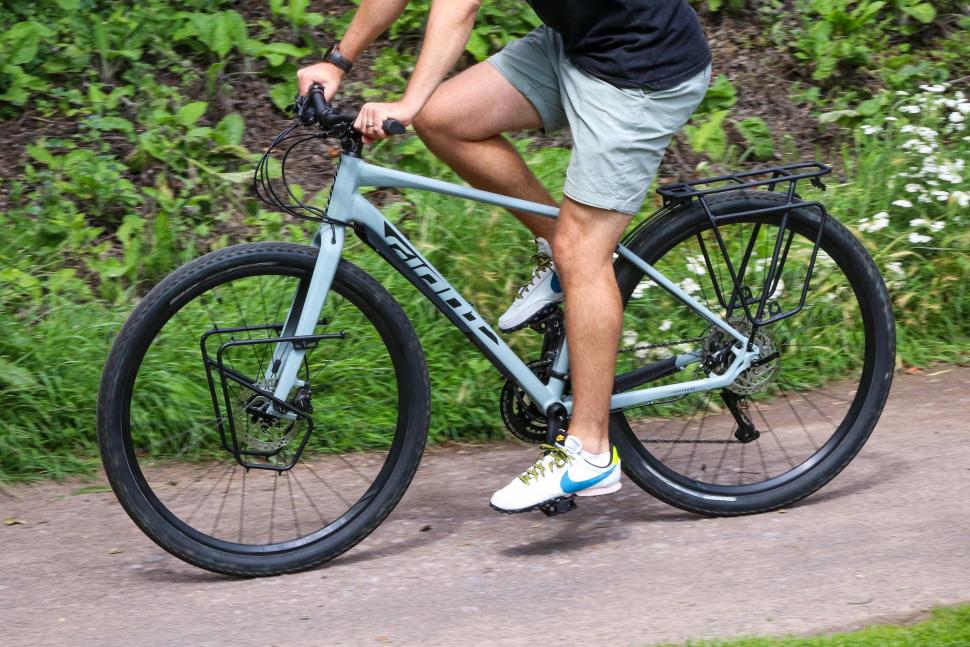

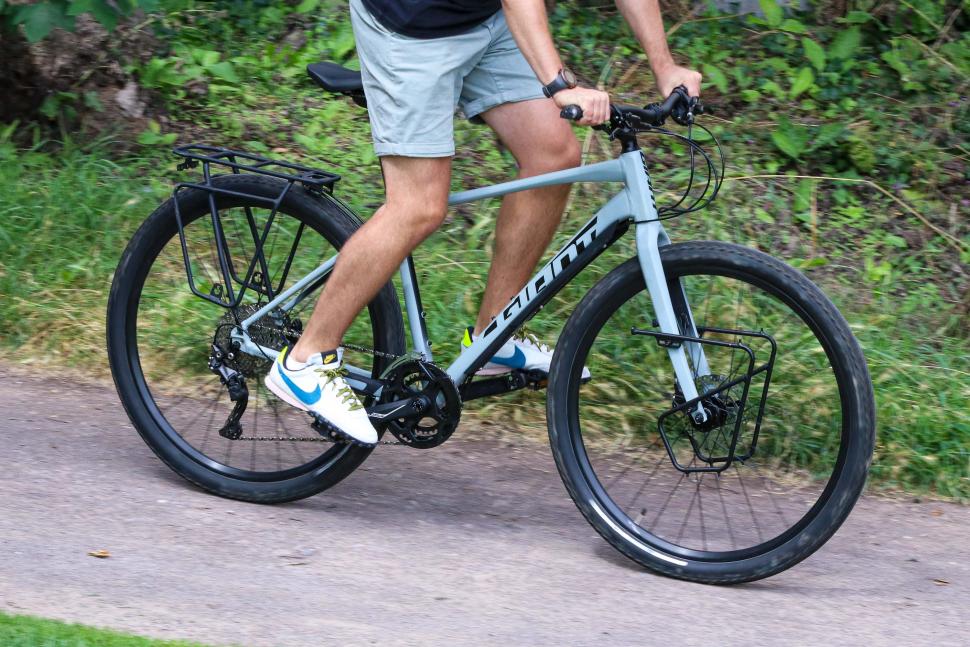
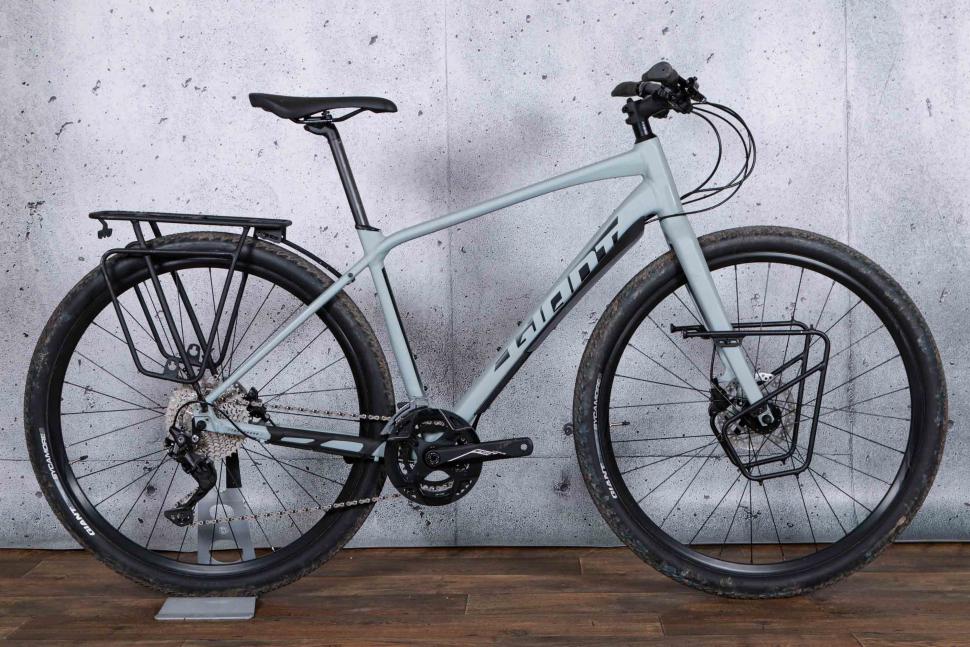


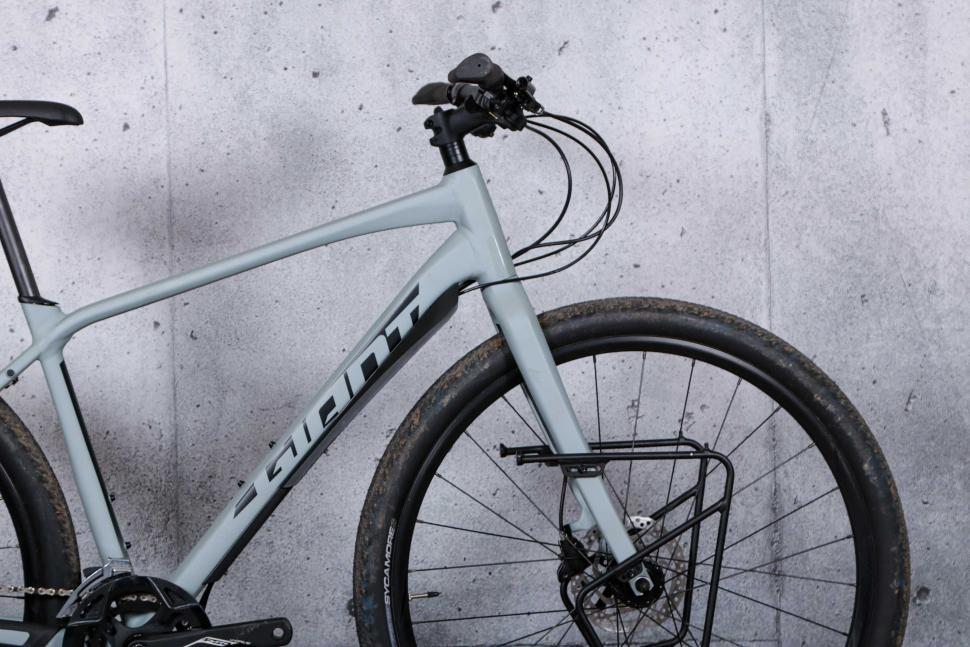

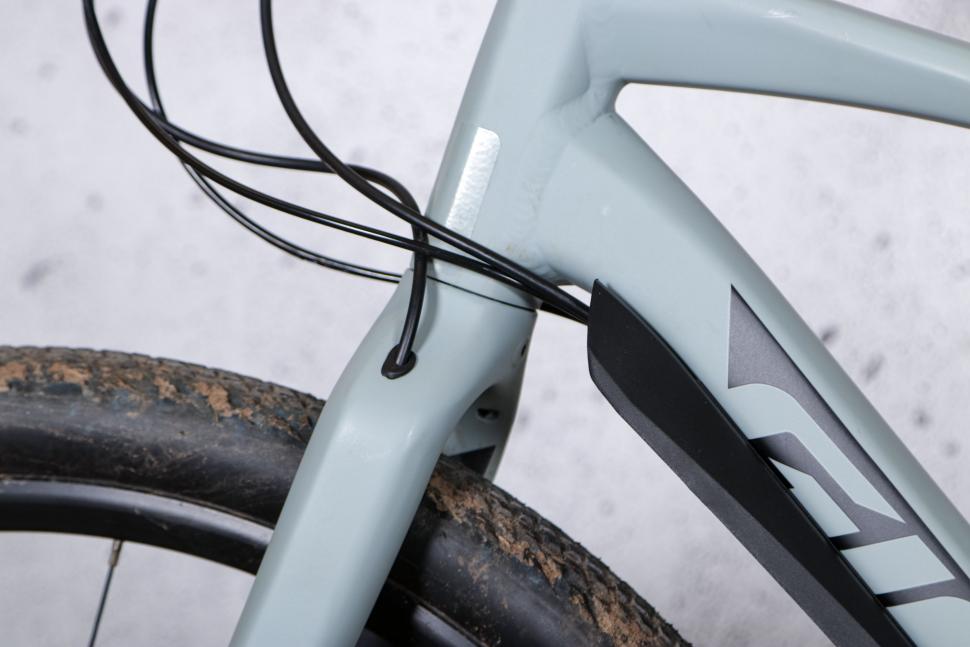
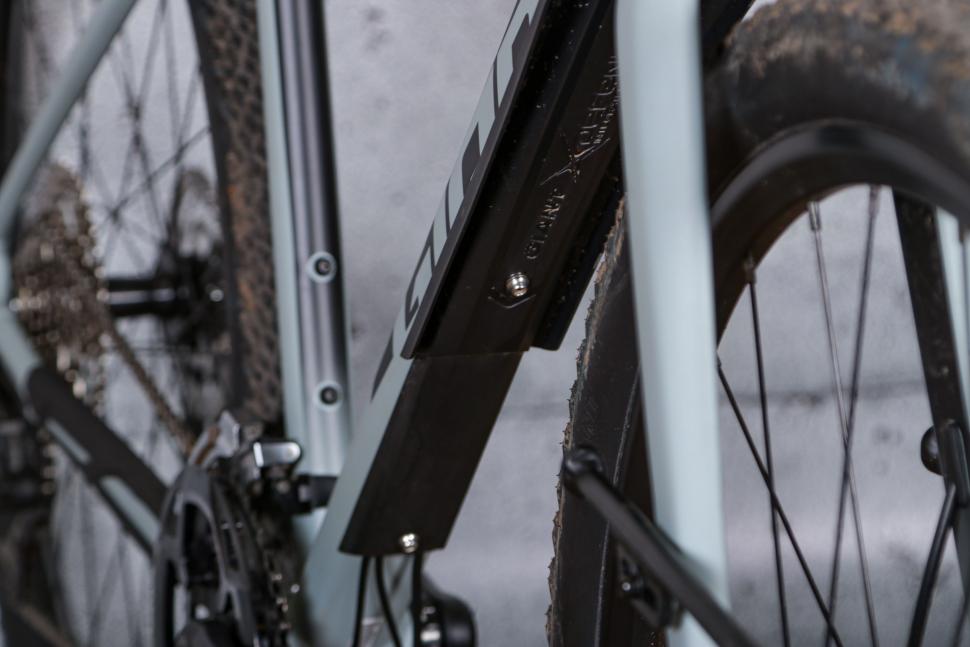
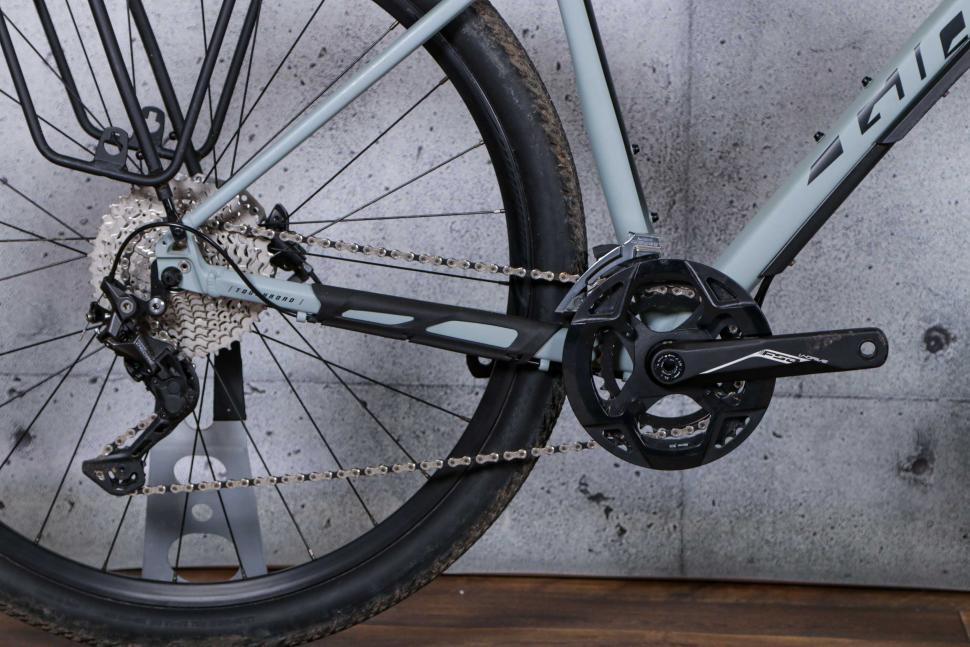
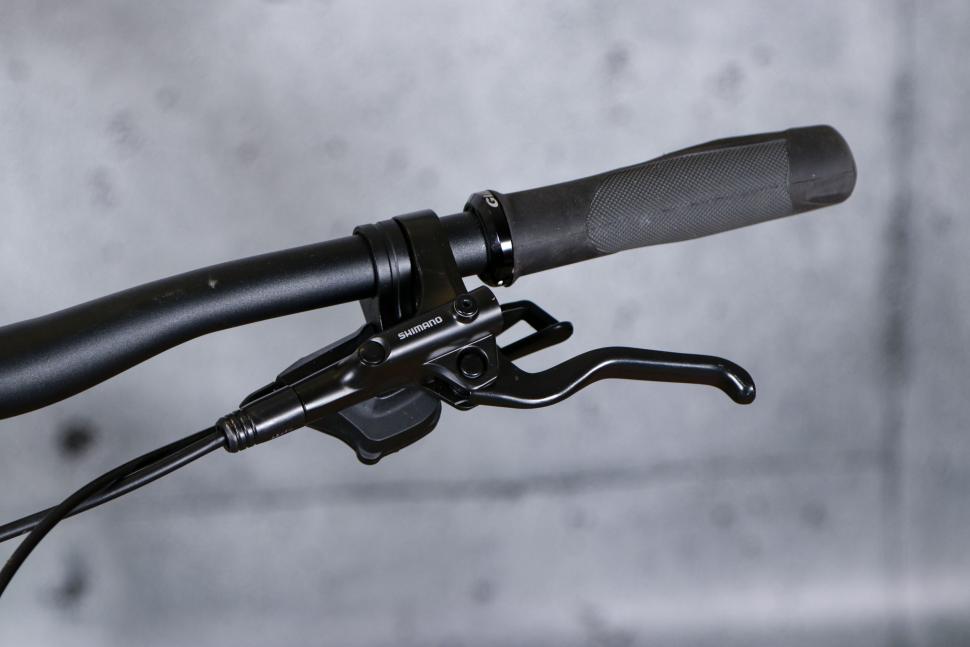
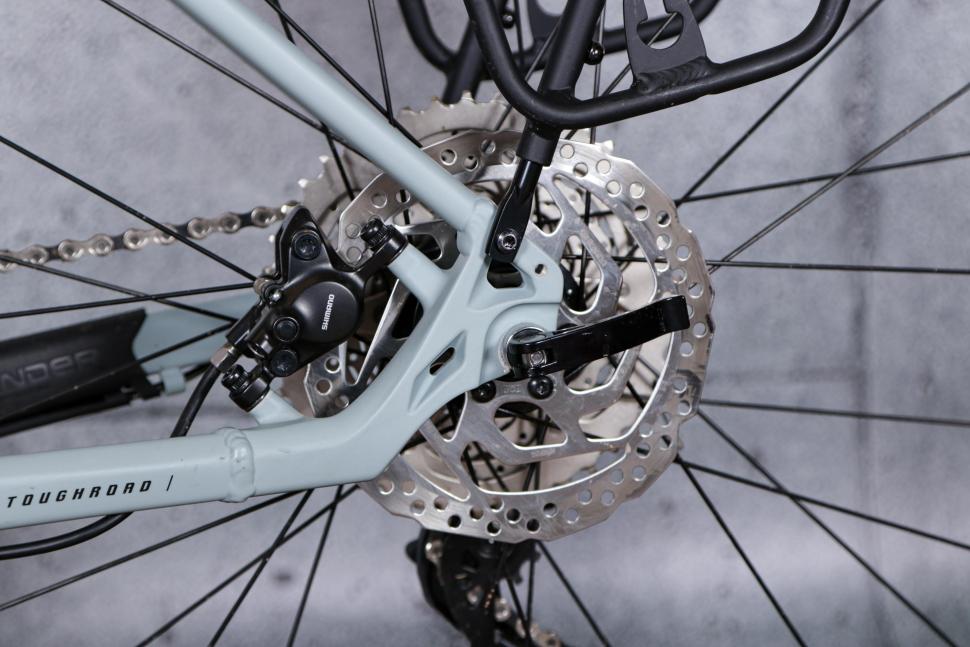

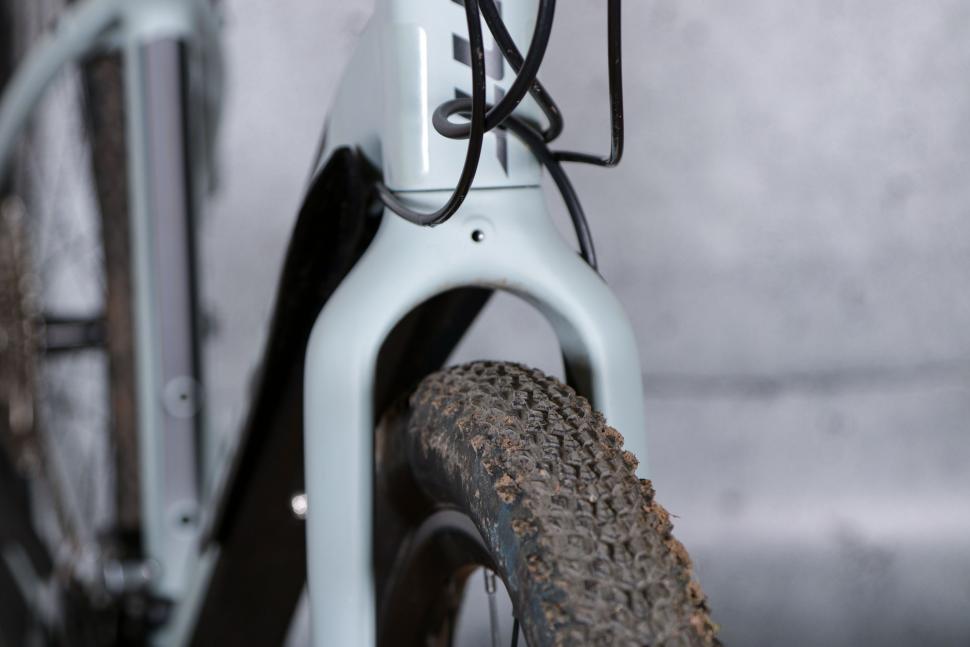


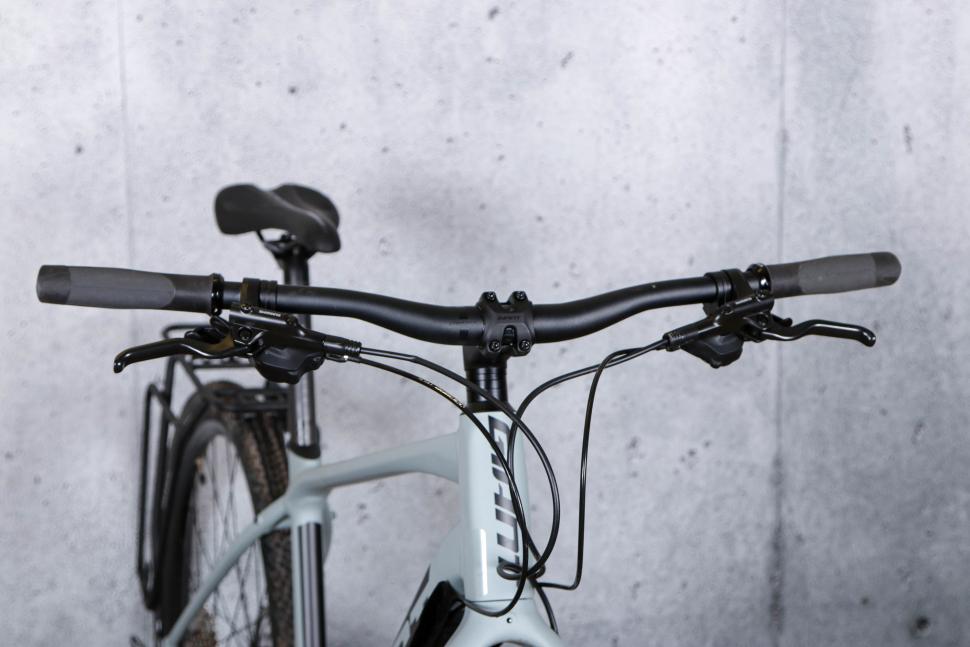
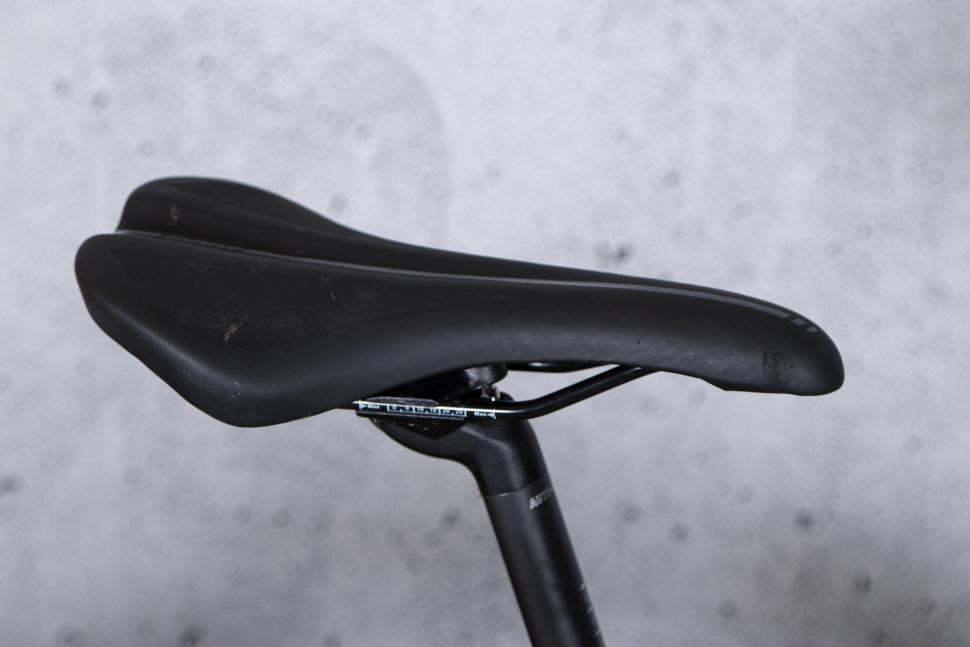
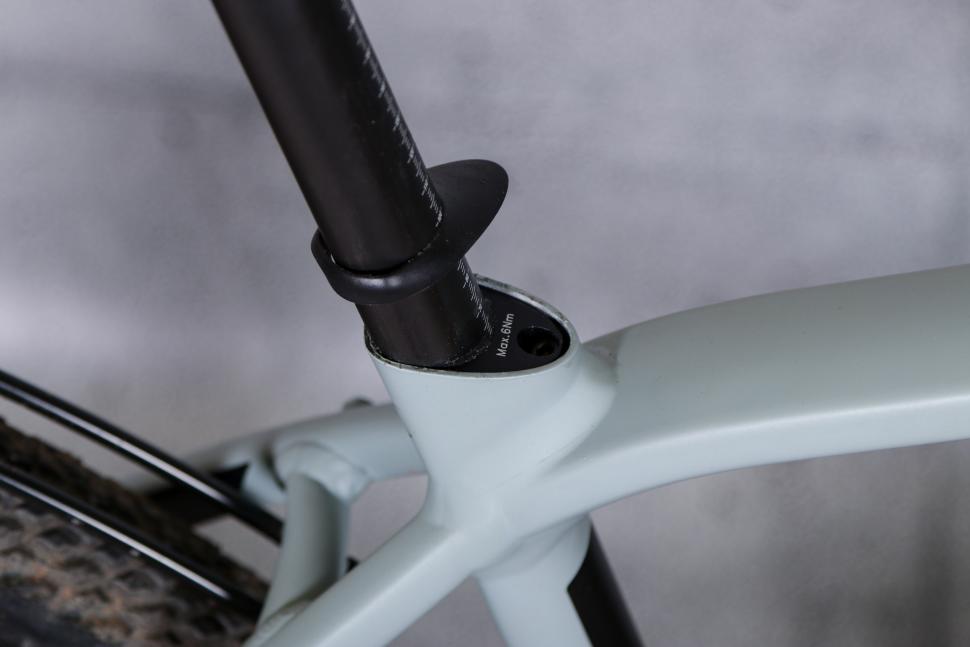

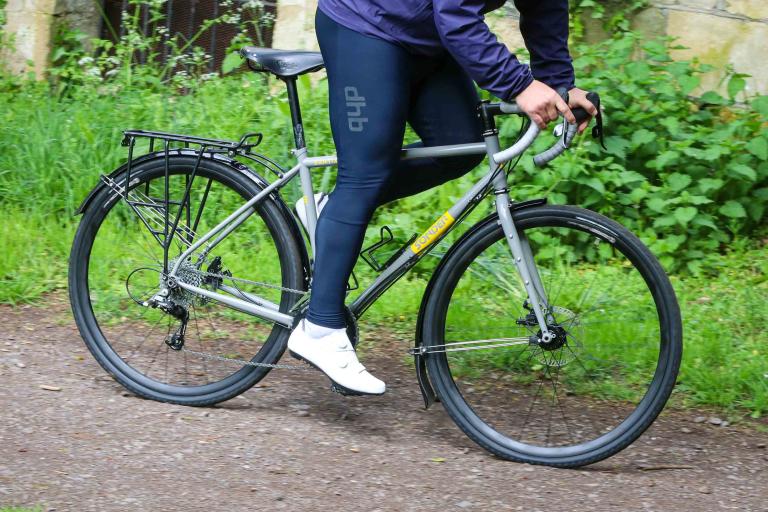
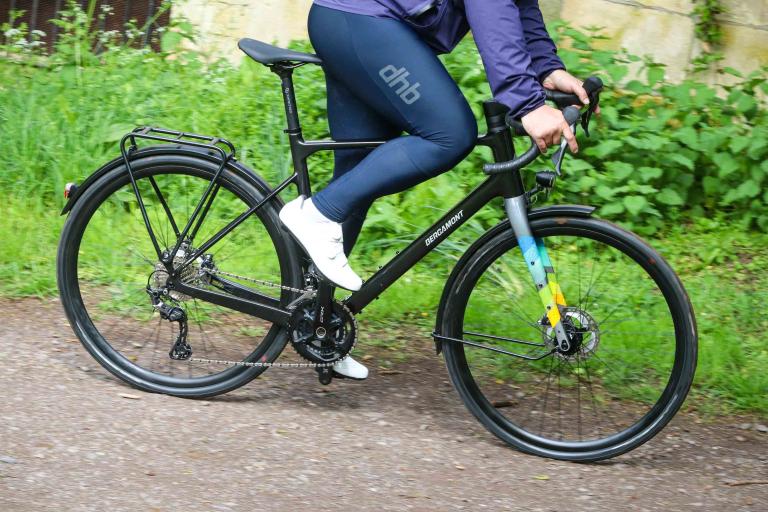
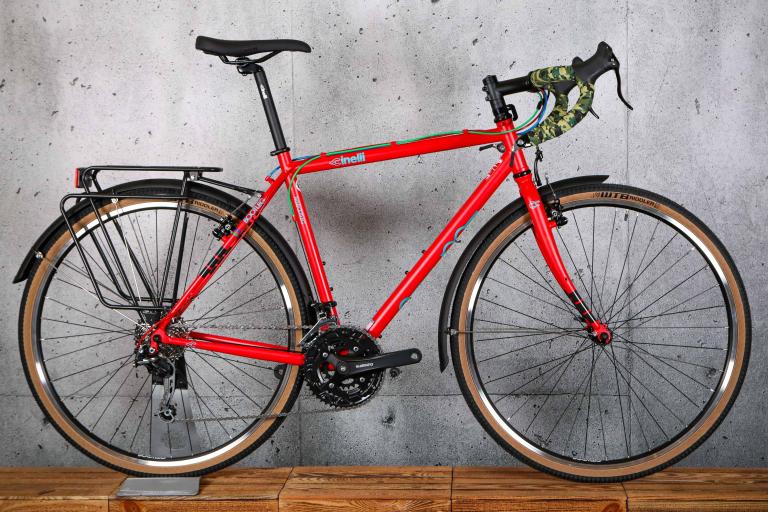
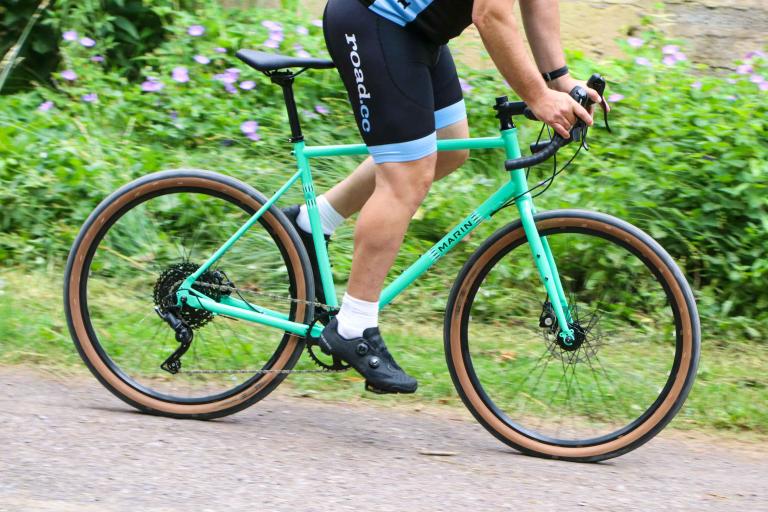
Add new comment
1 comments
Ah, you can always rely on road.cc to cover stuff years ago which you ignored at the time, only to find useful now. This is literally the only place I've found with a review of the Giant Rack It front rack which also shows how it mounts. Surprisingly this very same rack also fits the Revolt/Revolt Advanced, meaning you could turn that into a fast tourer should you wish.